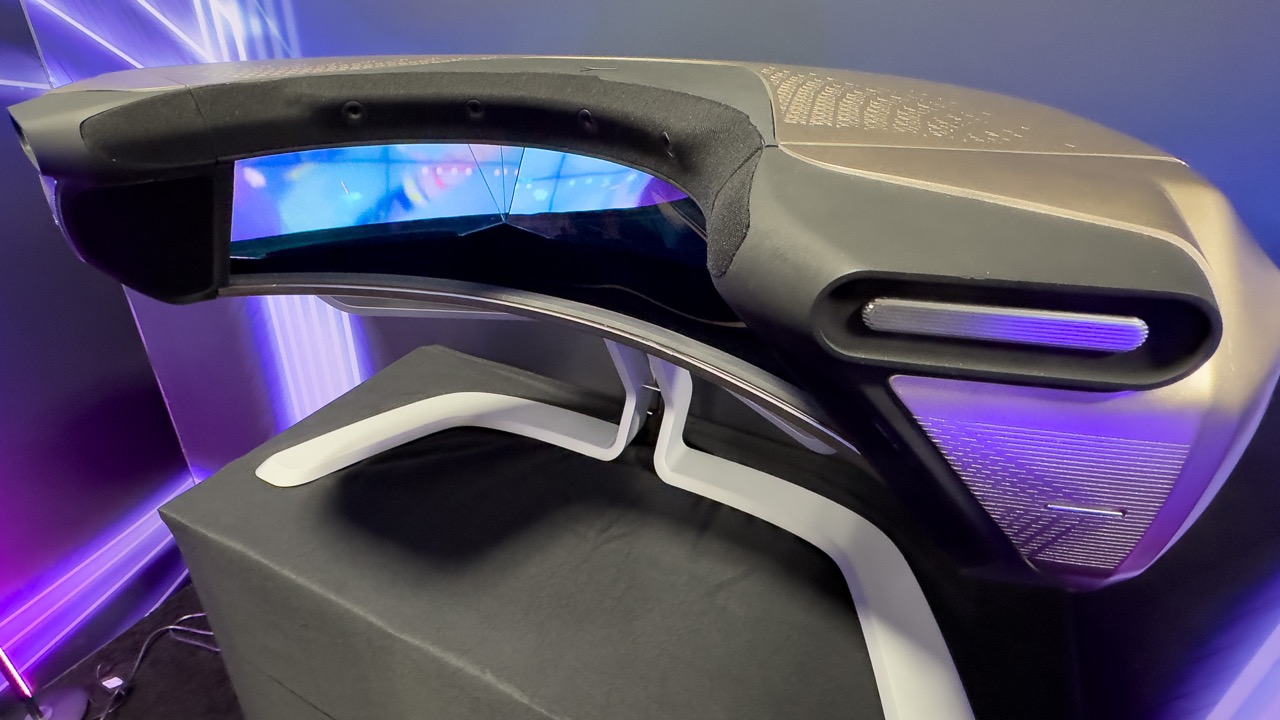Hot on the heels from its $15 million fundraise just a few months ago, Brelyon showed off its vision for what immersive visuals could look like. At CES in Las Vegas, we tried out the 8K fully immersive OLED display, which gives a VR headset-like experience without having to strap anything to your face.
“Brelyon Fusion allows the blending of light to scale field-of-view in a new way that achieves multiples of resolution,” explained Barmak Heshmat, CEO and founder of Brelyon in an interview with TechCrunch. “This kind of new lightfield expansion innovation really allows us to think of light as pieces of LEGO blocks that can computationally be built to create a more immersive screen.”
The tech is currently a prototype that won’t hit the market for a little while yet – the company guesses 3-4 years from now – but it’s deeply impressive nonetheless. The core technology is what the company calls Ultra Reality, usingprecise wavefront engineering to create a massive field of view with a profiled true optical depth. The upshot is a display that completely surrounds your field of view. It also adds spatial audio, and uses a series of cameras to track your head position, adjusting what the display is showing accordingly for maximum immersion.

Brelyon’s prototype display showed off at CES. Image Credit: TechCrunch / Haje Kamps
So, er, who is it for?
“We see this as a parallel to a headset experience, without people having to put on any headsets. Of course, the Enterprise market is one of the early adopters. They are already buying some of our older models,” Heshmat explains. “This will be fantastic for gamers, anyone that uses multi-monitor setups, or wants to do something with headsets but doesn’t want to stand up and dance all the time. It is a very immersive desktop experience.”
The company points out that the market has spent tens of billions of dollars buying VR headsets, but that it believes that immersion shouldn’t equal headsets.

Obviously, a photograph doesn’t do the display justice, but if this is the future, we can’t wait to get there. Image Credit: TechCrunch / Haje Kamps
“There should be other solutions for people that don’t want to wear headsets, but still want to get immersed. What’s happening in the industry is that because headsets are becoming more mainstream, some of the elements that were used for headsets are now becoming lower-priced,” Heshmat says. “That allows us to create what we call ‘optical displays.’ They use a combination of optics and computational techniques to give you these virtual images without you having to wear goggles. We are the architect of these new categories of displays.”
If you like your videos with a bit of deep-trance music and music-video style fast edits, Brelyon has some more visuals for you:
At CES, this VR headset wears you by Haje Jan Kamps originally published on TechCrunch









